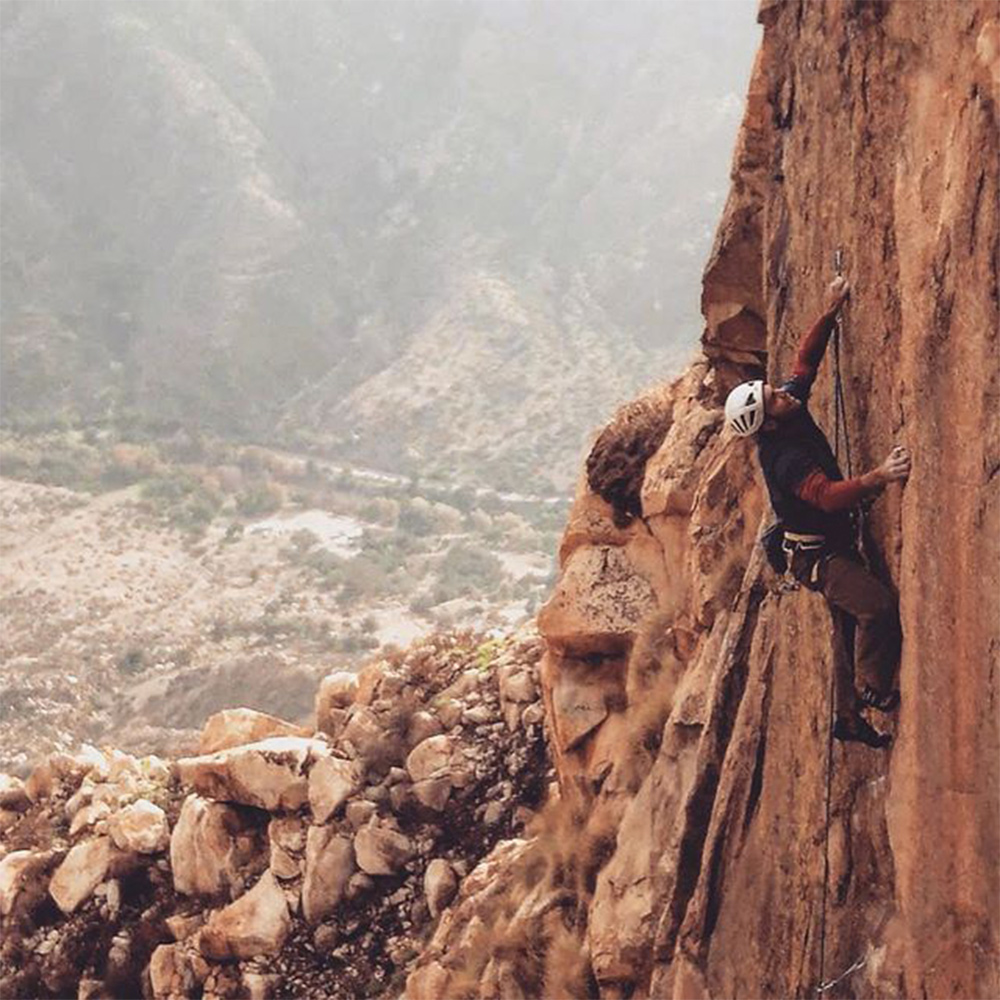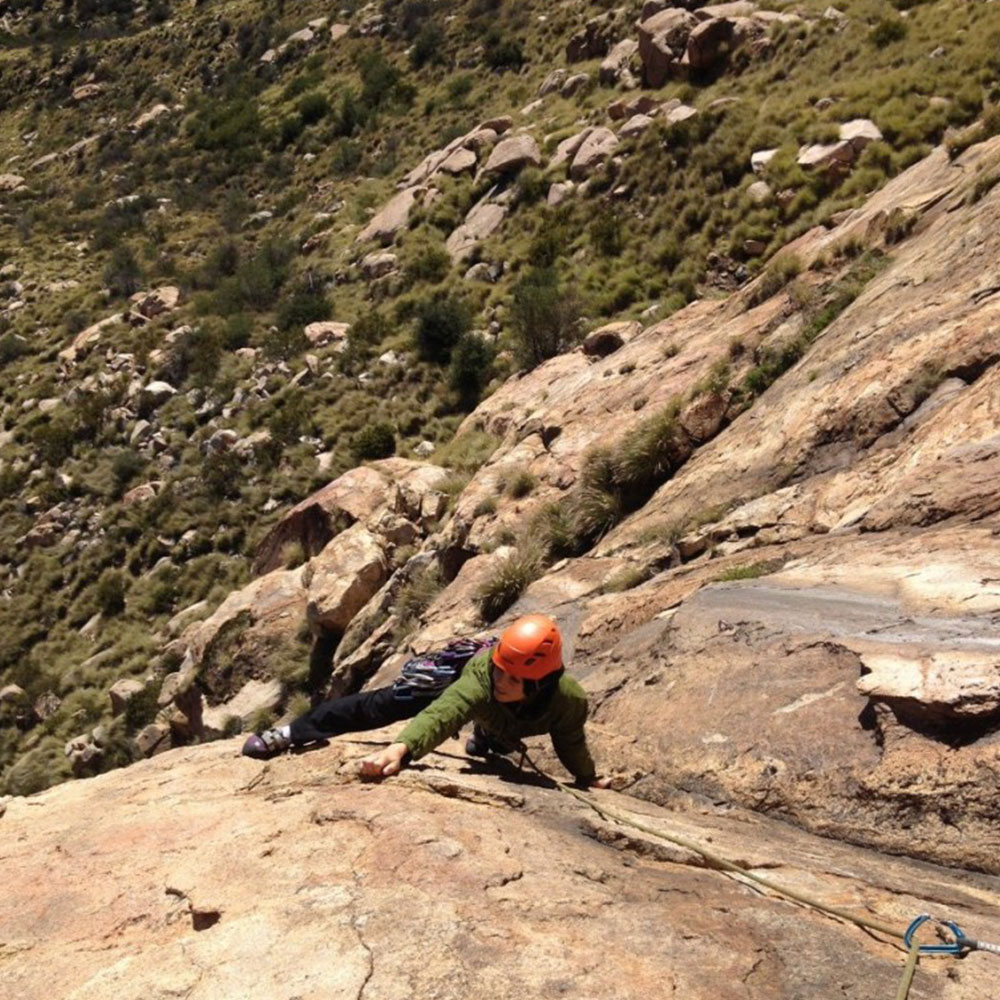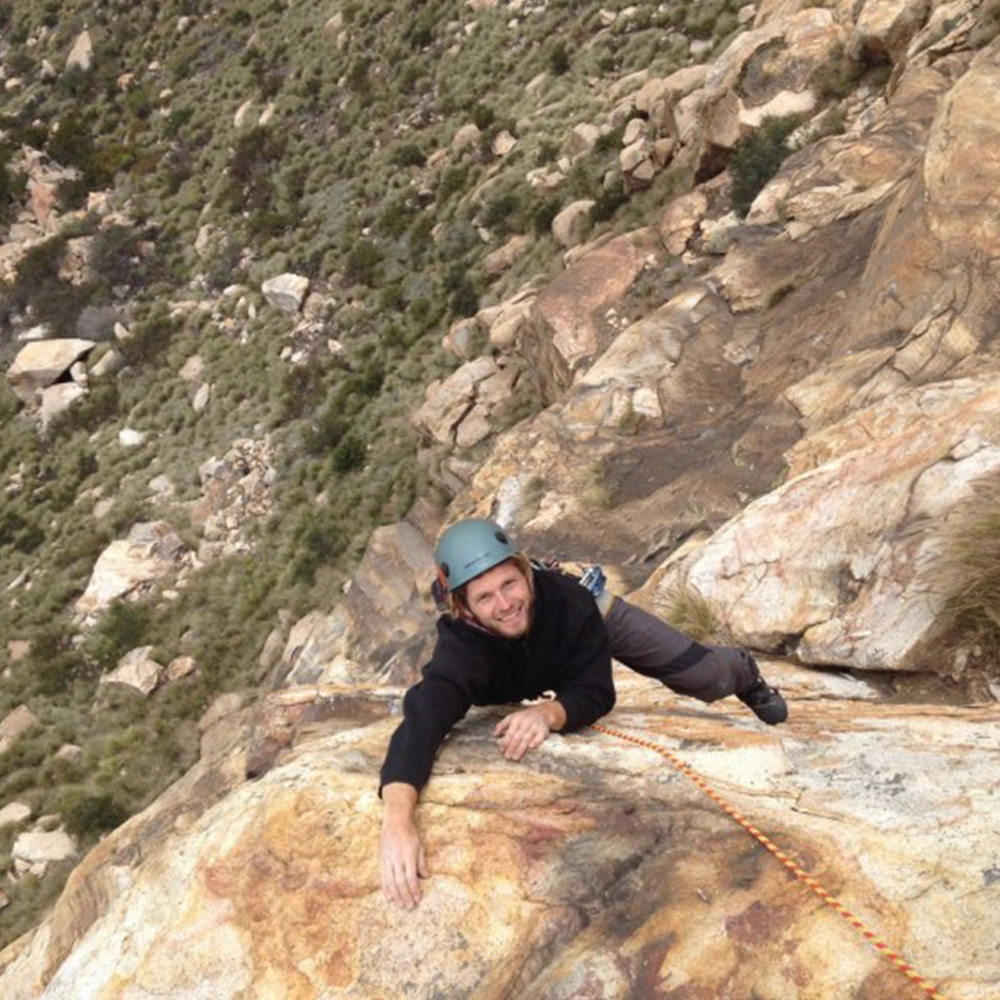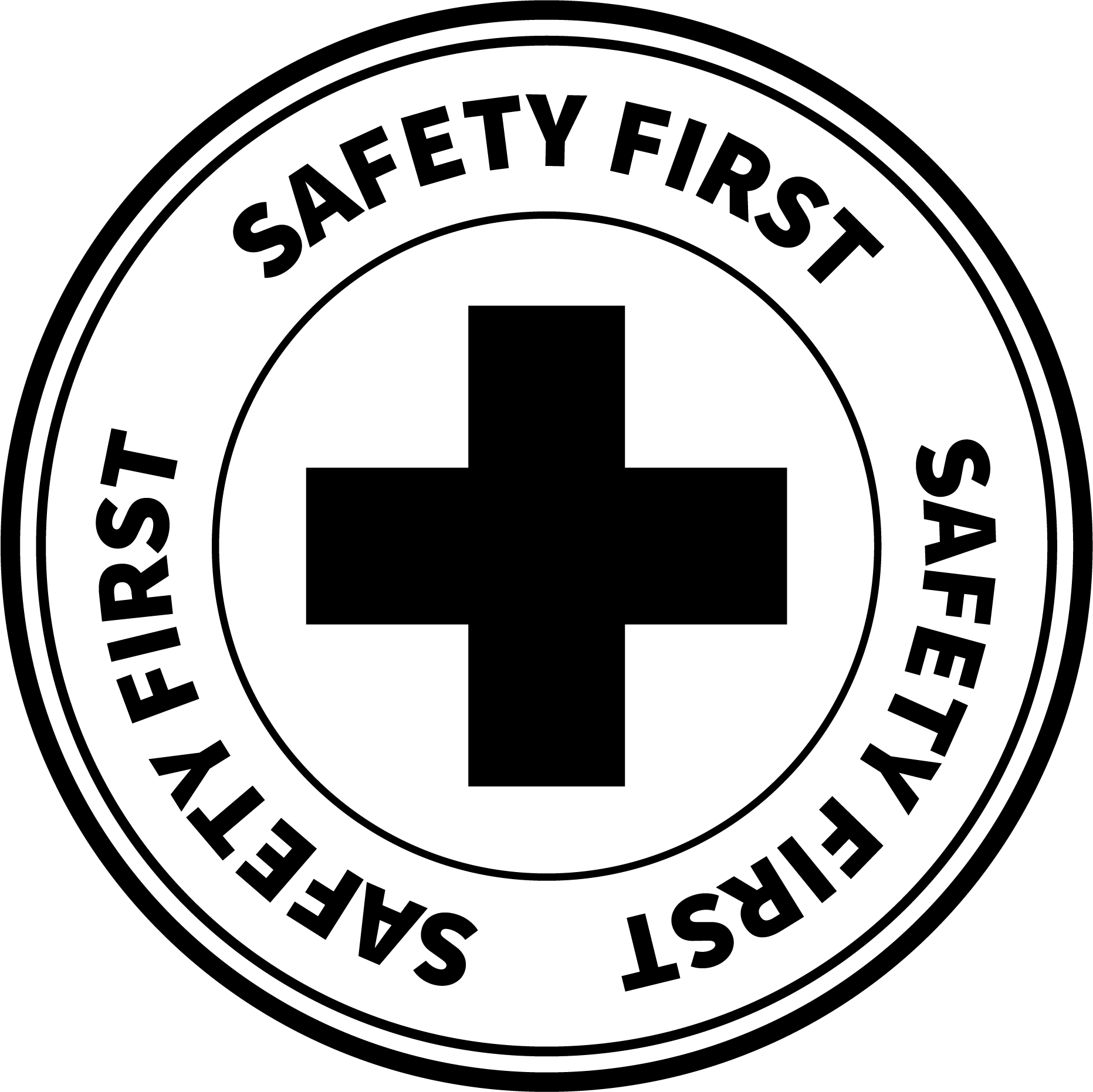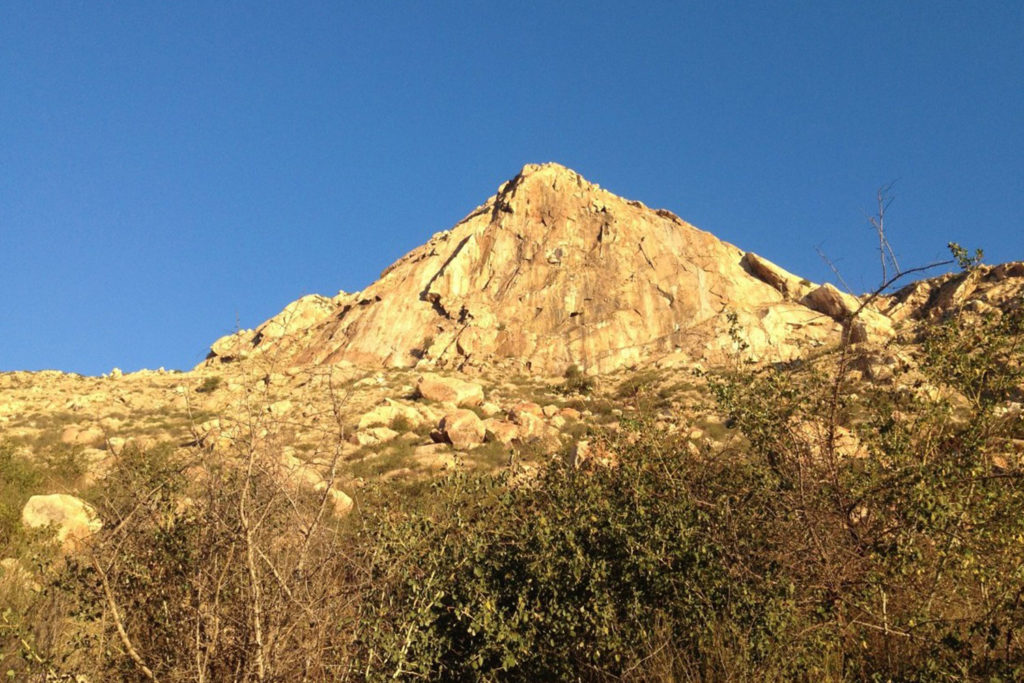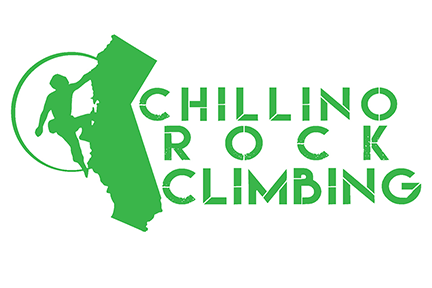El Cajon Mountain
About:
El Cajon Mountain is spectacular! Not only is it fairly close to the ocean – it also features multi-pitch sport climbing on superb granite in a stunning location. The main rock climbing wall is only a small fraction of the entire mountain that is also known for a stout hike in San Diego.
The climber’s trailhead starts nearby the entrance gate of “El Capitan Reservoir” in Lakeside, East county San Diego. From highway 8 take Lake Jennings Parkway. Exit and take a left turn. Drive 2 miles and take a right turn on El Monte Road. Continue on El Monte Road for 5.5 miles and park at the huge pullout with a few big wooden poles sticking out of the ground (if you are at the gate turn around for ½ mile). To reach the actual trailhead walk back towards the lake and the very end of the pullout looking for a small trail that drops down left into the riverbed. Cross the fixed plank/bridge and stay on the obvious trail. Your view opens up quickly as soon as you leave the denser vegetated riverbed. Keep walking towards the giant powerline tower directly in your view up to El Cajon Mountain. At the powerline hang a left on the fire road and keep walking for under a mile until you see a bird nesting information sign on your right. Take the trail up towards the mountain. The workout begins!
From the parking to the base of the rock formation the elevation gain makes up a stunning 1,900 feet in 1.9 miles. Hiking up to the rock formation is a big part in the overall activity for the day. Once up there you are welcomed by beautiful views and almost better climbs. A total number of about 50 routes and combined pitches of close to one hundred provides for an excellent rock climbing playground. There are plenty of big ledges in between pitches with comfortable anchor stances. Almost each anchor at El Cajon is set up for rappelling which is almost necessary for every route there. Even though a bulk of the climbing is within the 5.10 and 5.11 range, there are a few multi-pitch climbs at 5.6 to 5.9. “Leonids” is a great example of an amazing moderate route. It is by far the most climbed multi-pitch route in San Diego for a good reason. Three pitches of sustained 5.9 face climbing on amazingly positive features. This route has even been mentioned in climbing magazine as one of the highlight routes in Southern California.
On a clear day you can see the Ocean and the Coronado Island’s right off of Mexico’s shores. The exposure and view is phenomenal way up on the cliff with mostly sunny rock climbing conditions. In the past years local climbers from San Diego have been making an effort to establish more and more climbs on the main cliff and other smaller rock formations that are located all over the hillsides of the massive outcrop of El Cajon Mountain. Other established areas like “Mountaineer’s wall”, “El Monte slabs” or “Collin’s crag” make up for even more exploring opportunities at this beautiful rock climbing destination in San Diego.
The history of development traces back to the 60’s and 70’s when Eric Beck, Steve McKinney, the Hooper brothers, Milo Pradonovich and Doug White came out to test their rock climbing skills. Throughout the 1980’s and 1990’s only a few people climbed at El Cajon Mountain such as, Ted Doughty, John Marinuchi, James Barnett and other unknown climbers. The development brought out a handful of routes including the most impressive “Center Direct” that was originally climbed as a mixed free and aid route. A new major wave of development came in with the 2000’s when Brian Spiewak established classics like “Leonids” or “Triton Tower”. He was then joined by Randy Leavitt, Glen Svenson and Chris Hubbard who were much eager to establish the impressive overhanging headwall of the cliff. This era brought in harder climbs to El Cajon Mountain such as, “The Commander” or “Pockets of Resistance”, both classic 5.12 sport climbs in San Diego. Simultaneously a climber named Gary Anderson put up climbs on the right side of the wall which filled a huge gap of non-explored terrain. All in all half a decade of trail development, cleaning loose rock and placing bolts now makes way for one of the best rock climbing areas in San Diego.
The climber’s trailhead starts nearby the entrance gate of “El Capitan Reservoir” in Lakeside, East county San Diego. From highway 8 take Lake Jennings Parkway. Exit and take a left turn. Drive 2 miles and take a right turn on El Monte Road. Continue on El Monte Road for 5.5 miles and park at the huge pullout with a few big wooden poles sticking out of the ground (if you are at the gate turn around for ½ mile). To reach the actual trailhead walk back towards the lake and the very end of the pullout looking for a small trail that drops down left into the riverbed. Cross the fixed plank/bridge and stay on the obvious trail. Your view opens up quickly as soon as you leave the denser vegetated riverbed. Keep walking towards the giant powerline tower directly in your view up to El Cajon Mountain. At the powerline hang a left on the fire road and keep walking for under a mile until you see a bird nesting information sign on your right. Take the trail up towards the mountain. The workout begins!
From the parking to the base of the rock formation the elevation gain makes up a stunning 1,900 feet in 1.9 miles. Hiking up to the rock formation is a big part in the overall activity for the day. Once up there you are welcomed by beautiful views and almost better climbs. A total number of about 50 routes and combined pitches of close to one hundred provides for an excellent rock climbing playground. There are plenty of big ledges in between pitches with comfortable anchor stances. Almost each anchor at El Cajon is set up for rappelling which is almost necessary for every route there. Even though a bulk of the climbing is within the 5.10 and 5.11 range, there are a few multi-pitch climbs at 5.6 to 5.9. “Leonids” is a great example of an amazing moderate route. It is by far the most climbed multi-pitch route in San Diego for a good reason. Three pitches of sustained 5.9 face climbing on amazingly positive features. This route has even been mentioned in climbing magazine as one of the highlight routes in Southern California.
On a clear day you can see the Ocean and the Coronado Island’s right off of Mexico’s shores. The exposure and view is phenomenal way up on the cliff with mostly sunny rock climbing conditions. In the past years local climbers from San Diego have been making an effort to establish more and more climbs on the main cliff and other smaller rock formations that are located all over the hillsides of the massive outcrop of El Cajon Mountain. Other established areas like “Mountaineer’s wall”, “El Monte slabs” or “Collin’s crag” make up for even more exploring opportunities at this beautiful rock climbing destination in San Diego.
The history of development traces back to the 60’s and 70’s when Eric Beck, Steve McKinney, the Hooper brothers, Milo Pradonovich and Doug White came out to test their rock climbing skills. Throughout the 1980’s and 1990’s only a few people climbed at El Cajon Mountain such as, Ted Doughty, John Marinuchi, James Barnett and other unknown climbers. The development brought out a handful of routes including the most impressive “Center Direct” that was originally climbed as a mixed free and aid route. A new major wave of development came in with the 2000’s when Brian Spiewak established classics like “Leonids” or “Triton Tower”. He was then joined by Randy Leavitt, Glen Svenson and Chris Hubbard who were much eager to establish the impressive overhanging headwall of the cliff. This era brought in harder climbs to El Cajon Mountain such as, “The Commander” or “Pockets of Resistance”, both classic 5.12 sport climbs in San Diego. Simultaneously a climber named Gary Anderson put up climbs on the right side of the wall which filled a huge gap of non-explored terrain. All in all half a decade of trail development, cleaning loose rock and placing bolts now makes way for one of the best rock climbing areas in San Diego.
